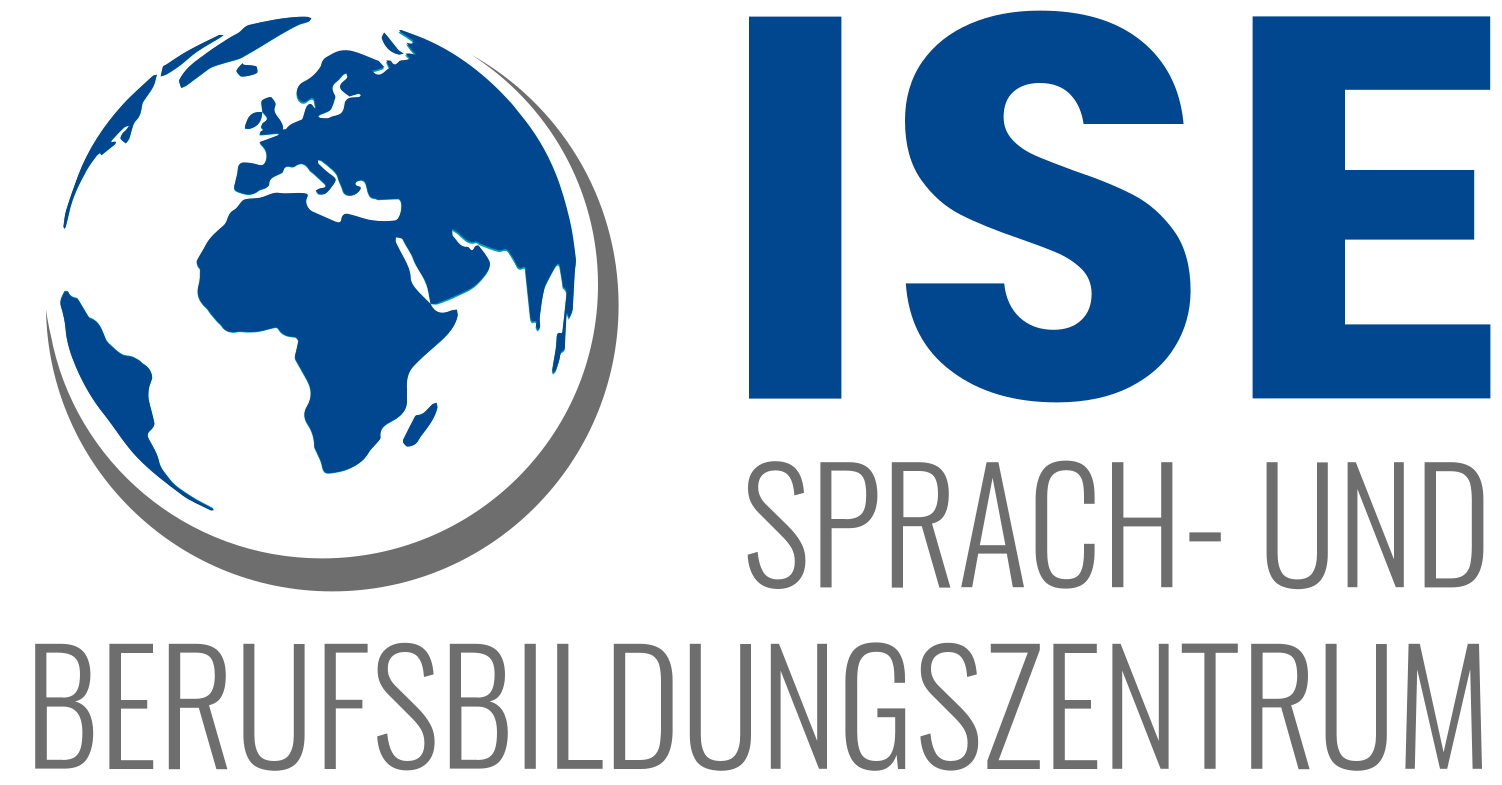The visit of our prospective warehouse logistics specialists to the freight transport center at the port of Nuremberg
Under a completely cloudless sky, the participants of one of our IHK retraining courses to become warehouse logistics specialists were able to enjoy an interesting and cheerful harbor tour on Wednesday, April 24, 2013. Waterways and the harbor basins did not remain hidden for long from the visitors who were traveling around the impressive area in the ISE minibus and another car under the charming accompaniment of Martina Merkl (from Hafen Nürnberg-Roth GmbH) - only the longed-for container ships appeared to want to completely evade prying eyes.
However, before setting off on the tour, Ms. Merkl first familiarized the protégés of the ISE Language and Vocational Training Center in the port administration's premises with the most important facts about the organizational structure of the GVZ (freight traffic center) and the "coexistence" of the companies based here ; The most important figures and economic data as well as a geographical overview of the area rounded off the presentation - and here we also learned that there is currently a lock blockage due to various work: one of the reasons why one might be looking in vain today for the giant freighters in would keep an eye out for the harbor basin. However, it also turned out that the ship mode of transport only has a comparatively small share of the total volume of goods handled compared to the other two modes of transport, truck/rail, in the so-called “trimodal” freight transport system. According to Ms. Merkl, this is largely due to the structural restrictions caused by the height of the bridges and overpasses, which allow a maximum stacking height of only two containers on top of each other (instead of the permitted four) on the ships, and together with the ship's naturally long transport time its attractiveness is limited to relatively few, specific transport goods (large, heavy, but not urgent).
However, things seem to be completely different with the trucks: equipped with “swap bodies” (i.e. the containers can be placed directly on the truck chassis), they rushed under the gantry cranes every minute and had their load piggybacked on them - the retrainees were amazed to see how how a huge 40-foot shipping container was steered at a dizzying height by the steady hand of the crane operator and snapped into the truck chassis with centimeter precision in well under a minute. Luckily, the crane driver didn't confuse the ISE minibus, which was also standing, with one of the trucks and placed the container on the roof for the ISE visitors!
While driving on the roads, some of which had four lanes, you could literally feel the busyness and deadline pressure of the trucks, which were safely on the way to just-in-time deliveries or had to meet other fixed delivery dates. In contrast, the ISE “sightseeing bus”, which drove more leisurely past the impressively high stacks of containers at the container depots, was hopefully not seen as a traffic obstacle too often by the truckers, for whose often not easy work our retrainees will now be able to have a much greater understanding of in the future.
After a very good lunch in the harbor canteen, which was very well received by some ISE visitors, we said goodbye to the friendly support of Ms. Merkl and set off for the second prepared meeting of the excursion: Heike Rohmeyer was waiting for ISE at the Geis shipping company, who, so to speak, took over the afternoon program for the protégés.
In a small image film about Geis Eurocargo and the subsequent presentation as well as a question and answer session, the retrainees were able to learn a lot of interesting things about the work of a large shipping company. Ms. Rohmeyer's selection of topics was particularly successful, as she specifically addressed the differences between forwarding logistics and classic warehouse logistics, thus offering our prospective warehouse “specialists” a deeper insight into this field of activity, which is not entirely typical for them.
Equipped with brightly colored high-visibility vests, we were then able to see the transshipment center with our own eyes after this introduction: it was clearly explained and we were able to observe how the shipping goods were put together for the individual postal code areas of the so-called destinations. The prepared container swap bodies were then loaded by the workers using electric pallet trucks via the “ramps”, i.e. the docking gates for the trucks. As we found out, in the late afternoon the Geis farm would be transformed into a real “Stachus” when all the loaded swap bodies would be picked up by the semi-trailers and the containers would set off on their journey – longer or shorter depending on the destination.
Unfortunately, the ISE visitors no longer noticed this, as after a friendly farewell we had to set off on our own journey - namely towards home. What remained were some wonderful memories, a lot of interesting experiences, and the certainty that I had definitely chosen an extremely lively and exciting professional field.
With this in mind, a big thank you again to everyone involved for the great support and a really successful, eventful day!
Andreas Baumann

